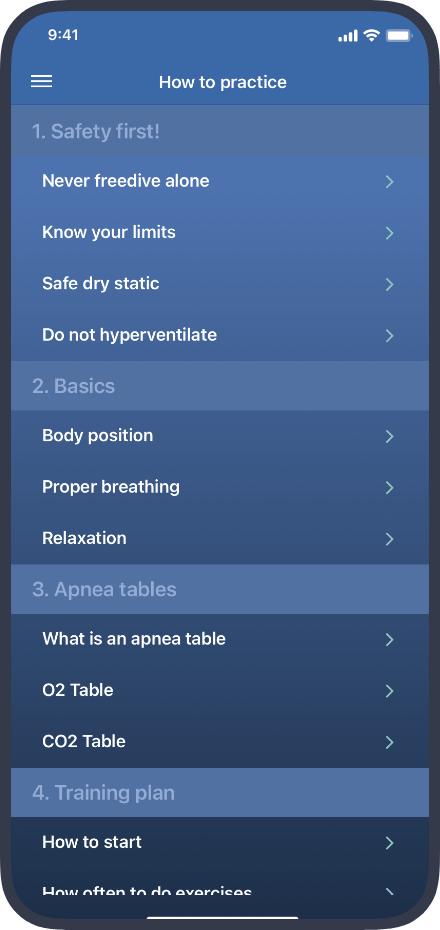Safety first!
Never freedive alone
Never do static breath-holds, or freedive alone in the water
There should always be a person present if you are doing your static breath-hold training. The person must be informed that you are doing a breath-hold, and must know how to help you in case you become hypoxic. It is strictly forbidden to perform breath-holds in a bath or a home pool without proper control. Long breath-holds can lead to loss of motor control or even to loss of consciousness.
Know your limits
Never do static breath-holds, or freedive alone in the water
We understand that you want to see fast progress, however, please respect your body and give it time to adapt to your training plan. We recommend increasing your apnea time slowly and gradually. It's better to choose a simpler training plan and to do the training every day than to choose a hard training once a week.
Safe dry static
Take a safe position during dry static apnea
Dry exercises are much safer than exercises in water. However, even doing dry static might cause you to feel dizzy or to even lose consciousness (it is very rare, but yet possible). No matter where you do the exercises — make sure that you cannot fall down during an exercise. The safest position is by lying on your back or sitting comfortably in a chair. Never do breath-hold training while driving a vehicle.
Do not hyperventilate
Hyperventilation involves deep, rapid breathing that decreases the amount of CO2 in the blood. It might feel easier at first to do a breath-hold after hyperventilation but it won't make your results better. Hyperventilation increases the risk of blackout.
Read next: Basics


